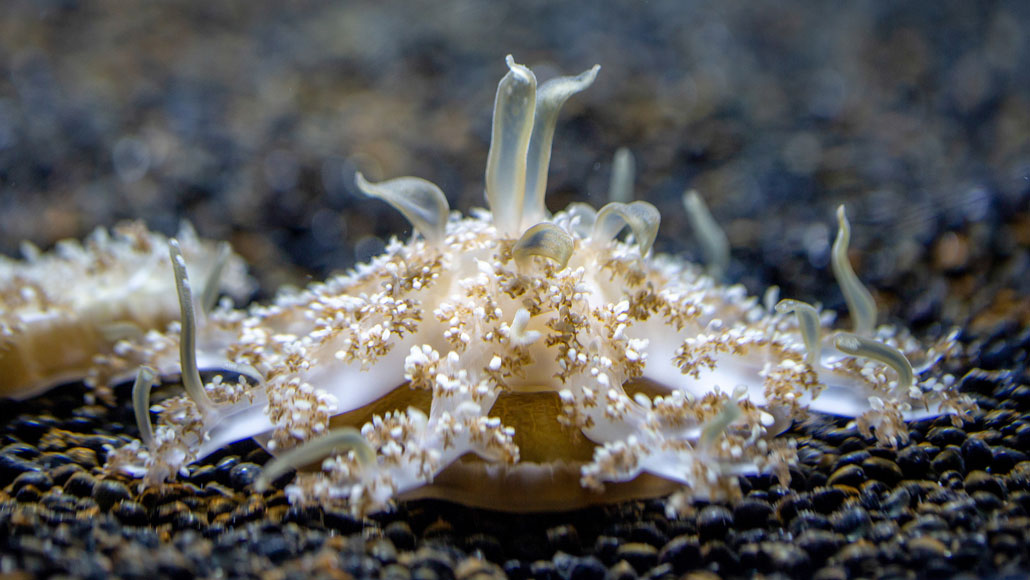Jellyfish snot can sting swimmers who never touch the animal
Mucus from jellyfish that sit upside-down on the seafloor has blobs lined with stinging cells

Upside-down jellyfish (pictured) can sting other animals without touching them thanks to microscopic clusters of stinging cells found in the snot that it releases into the surrounding water.
National Aquarium